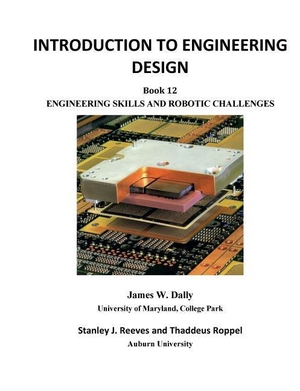Three chapters dealing with engineering and society are included. A historical perspective on the role engineering played in developing civilization and on improving the lives of the masses is presented in Chapter 1. In this chapter, we move from the past into the present and indicate the current relationship between business, consumers and society. The twenty greatest engineering achievements of the 20th century are briefly described. Chapter 5 discusses the balance between safety and performance. Methods to evaluate and recognize risky environments are discussed. The chapter includes a listing of hazards, which is important in identifying the many different ways users of a product can be
Mehr
Weniger
injured. Chapter 4 on ethics, character and engineering includes a large number of topics so the instructor can select from among them. A description of the Challenger and Columbia accidents is also given, because both of these fatal crashes provide excellent case histories covering safety related conflicts between management and engineers. A new reference to a video produced by the New York Times has been added. We strongly recommend viewing it. An introduction to the engineering profession, described in Chapter 2, covers engineering disciplines, on-the-job activities, salary statistics and registration information for your PE license. A useful student survival guide is also included in Chapter 3. We strongly encourage you to read it as it contains information for managing time that will be useful throughout your life. The very important topic of communications is covered in two chapters. Chapter 8, on technical reports, describes many aspects of technical writing and library research. The most important lesson here is that a technical report is different than a term paper for the History or English Departments. An effective professional report is written for a predefined audience with specific objectives. The technical writing process is described, and many suggestions to facilitate composing, revision, editing and proofreading are given. Chapter 7, on design briefings, shows the distinction among speeches, presentations and group discussions. Emphasis is placed on the technical presentation and the importance of preparing excellent visual aids. PowerPoint slides are usually employed as visual aids in a design briefing. Information on team skills is covered in Chapter 6. An introduction to MATLAB is provided in Chapter 11. Chapter 12 describes basic electric circuits and batteries to provide technical background helpful for the design and control of robots. Sensors that may be used to complete the task assigned as part of a robotic challenge are described in detail in Chapter 13. Concepts of statics and dynamics are introduced in Chapter 14 to enable the students to understand the forces and moments and their effect on controlling the motion of their robot. Finally, an introduction to programming an Arduino µprocessor in a version of C is included in Chapter 15. Two chapters on engineering graphics using computer programs are included. A discussion of preparing engineering drawings is described in Chapter 9. Several CAD/CAE programs are available on the college's computers and instructional videos are available to assist you in mastering the software. The use of tables and graphs in communicating engineering information using Microsoft Excel is presented in Chapter 10.
